Local SEO plays a vital role in digital marketing strategies targeting geographic areas.
Recent surveys found that 76% of consumers search online for local businesses, and 97% of mobile searches have local intent. With over half of searches being local, effective local SEO brings tremendous opportunities.
However, demonstrating the value of these efforts can be challenging for in-house and agency SEO specialists.
You could be putting in a lot of effort for your clients, but just pulling numbers from different tools isn’t enough.
You must translate data into understandable reports that communicate business impact and growth rates.
Feeling overwhelmed already? Don’t worry, we’ve got you.
In this guide, we’ll be covering some industry-tested techniques on how to craft Local SEO reports that speak volumes to clients.
Let’s jump right in…
Understanding local SEO metrics
Crafting an SEO report isn’t about ticking boxes on a one-size-fits-all checklist. With countless metrics at your disposal, it’s crucial to tailor your selection to align with the client’s goals and priorities.
Rather than overwhelming clients with abundant data, focus on a concise selection of 8-10 key performance indicators (KPIs) directly tied to their objectives.
With that said, here are the most common metrics that find their way to an SEO report.
Local search rankings
To truly understand how well your client website is performing in search results, you need to know where it stands for the keywords you’re targeting. Since search results can vary depending on location, it’s a good idea to check the specific areas you want to target.
Here, the problem is that most SEO tools don’t provide accurate local data. When you choose a location where you’d like to track your keywords, rank tracking tools generally assign an available Google Data Center nearby, but which is not necessarily the closest or offering the most accurate results.
For example, if you want to track your keywords in Berlin, Germany, a regular rank tracking tool will most likely not connect you to one of the two Google Data Centers in Berlin, but will actually give you data from the Google Data Center in Munich or Salzburg.
So, if you would like to accurately track local rankings, it’s imperative that you choose a tool specialized for this.
RELEVANT READ: 7 Insights to Achieve Better SEO Beyond Rank Tracking and Link Monitoring
Google My Business (GMB) Insights
Google approaches local searches differently by utilizing tools like the Local Search Pack and Google Business Profile.
For many local businesses, Google Business Profile listings can drive more conversions and foot traffic than their own websites.
To track Google Business Profile data, you’ll need to sign up for a connector compatible with conventional reporting tools.
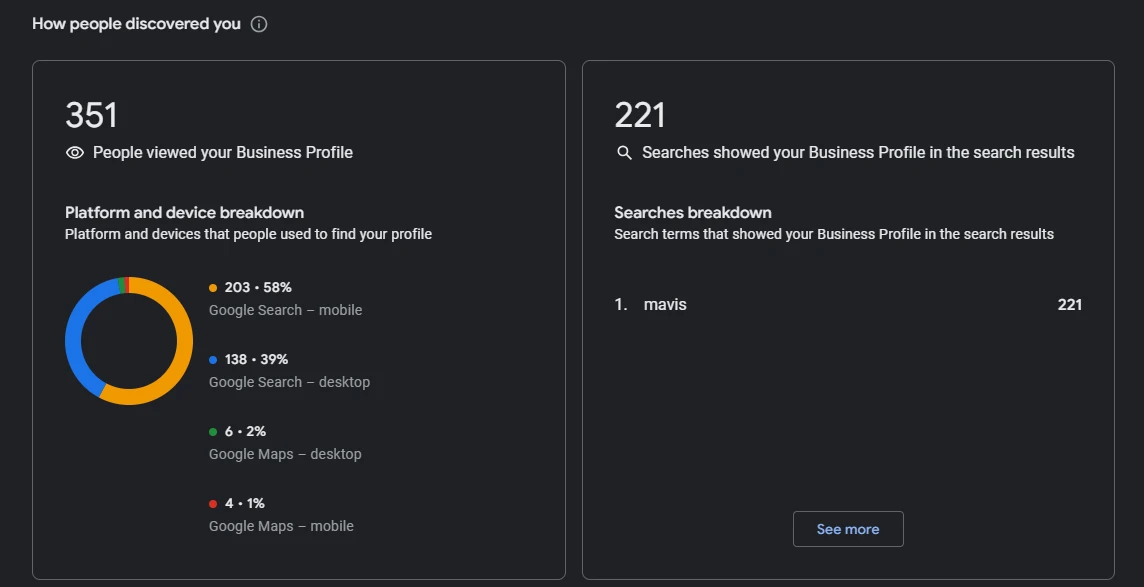
This report provides key information, including:
- The number of searches for you or your services
- How often your business appears on Google
- The actions people take after finding your business
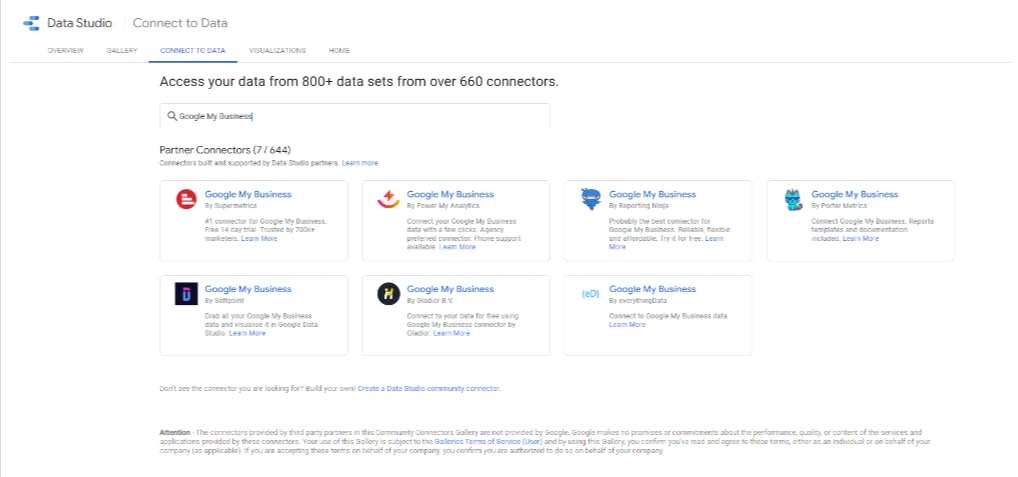

Additionally, tools like Nightwatch offer detailed keyword information for local search results, including local pack results and featured snippets. This data is valuable for businesses aiming to rank in “near me” searches, which can drive significant traffic.
It also provides APIs and data exports that allow you to integrate local ranking data into your existing reporting tools or dashboards. With this, you can create unified reports visualizing all your local search performance metrics from various data sources.
You can even customize the reports and include organic or local rankings accordingly.
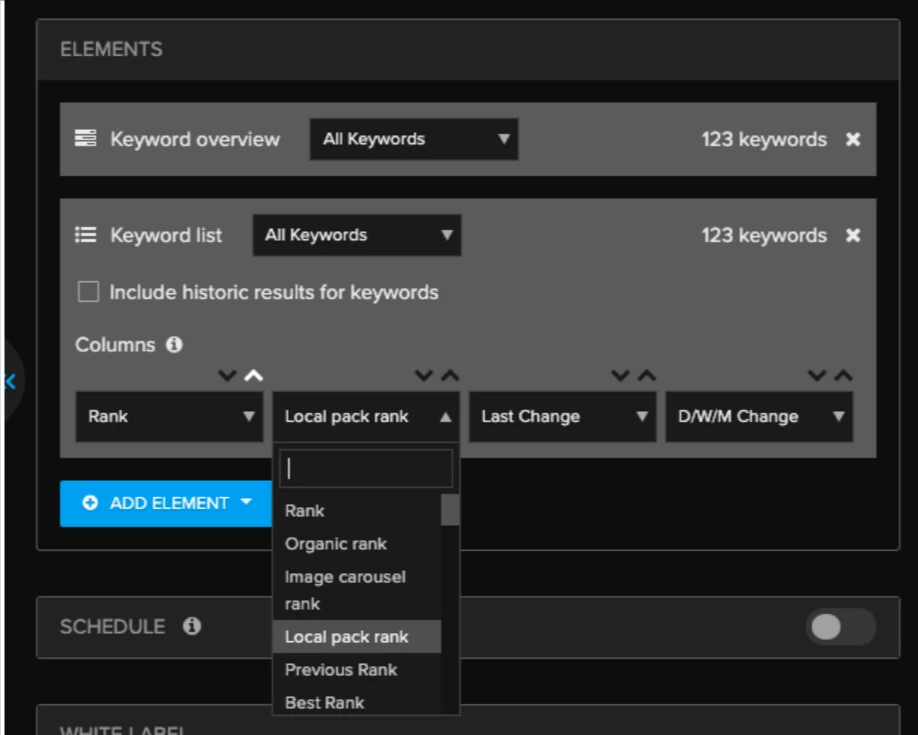
Or visualize them on a graph:
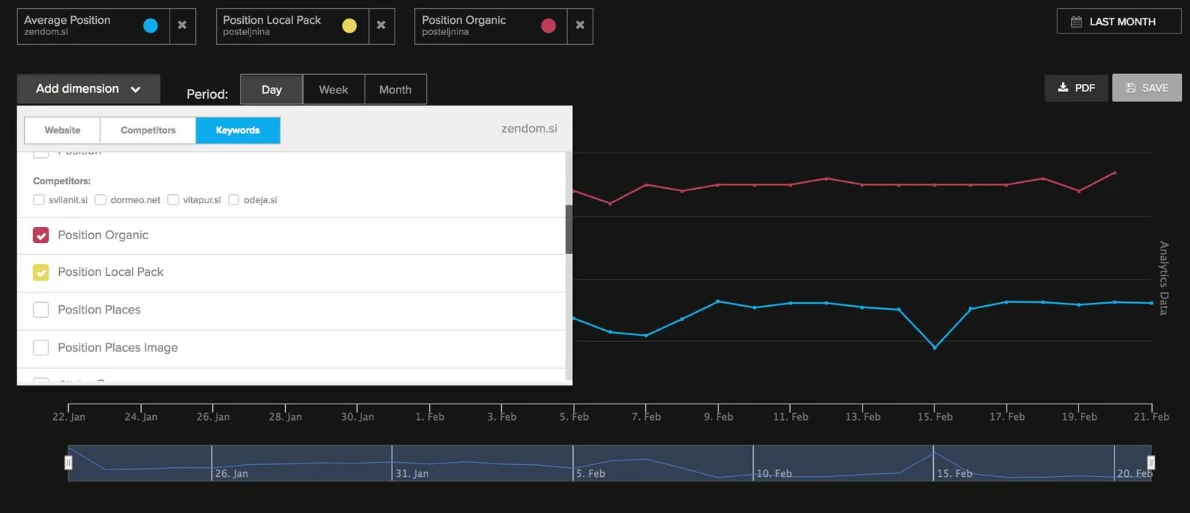
Website traffic and user behavior
One of the first questions your clients might ask is about where their website traffic comes from and how to improve its quality. Increasing organic traffic is often a top priority in SEO goals.
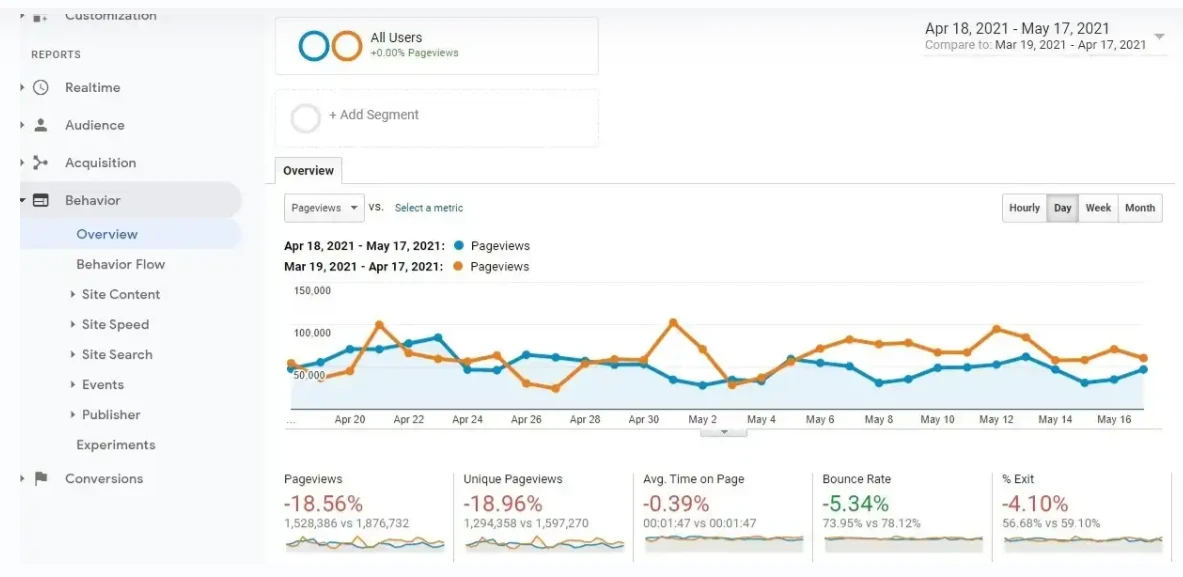

If your clients have this objective in mind, it’s essential to include Google Analytics data in your SEO report. Focus on organic traffic while also providing basic information about other channels like paid or referral traffic.
There are tons of user behavioral metrics out there, but the following is the most consequential to consider:
- Session duration
- Bounce rate
- Pageviews per session
- Click-through rate (CTR)
Conversion rates
Think of your client’s business like a bustling beehive – lots of activity, but if those bees aren’t producing honey (or, in this case, conversions), all that traffic won’t mean much.
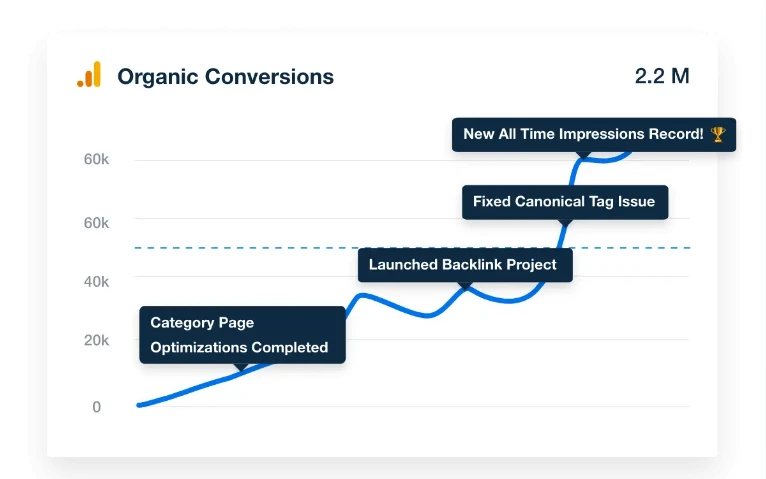

When crafting your SEO report, it’s crucial to distinguish between traffic and conversions. Define what constitutes a conversion for your client – it could be a sale, a demo download, or a simple inquiry call.
To delve deeper into this KPI, consider including metrics like new visitor conversion rate, returning visitor conversion rate, best-converting pages, cost per conversion, and conversion breakdown by device and location.
“Traffic devoid of conversions is just a vanity metric.”
By focusing on conversion rate optimization, you can highlight where improvements are needed and address any underlying issues. - Vineet Gupta, Founder of 5minutesSEO
Some invaluable insights to formulate better conversion rate optimization strategies:
- Understanding how users engage with desired actions on the website, whether it’s making a purchase or signing up for emails.
- Identifying high-converting and low-performing pages.
- Assessing the effectiveness of different conversion types.
- Estimating potential ROI based on marketing efforts.
- Offering data for benchmarking against past or future performance.
Citation and backlink profile
Backlinks serve as critical signals for Google’s ranking algorithm, making them a focal point of any local SEO strategy. Clients are keen to assess the efficacy of your link-building efforts, so it’s essential to provide comprehensive insights.
In your report, highlight the number of new links acquired, emphasizing the importance of quality over quantity. Mentioning the Domain Authority (DA) of linking sites underscores the significance of high-quality backlinks.
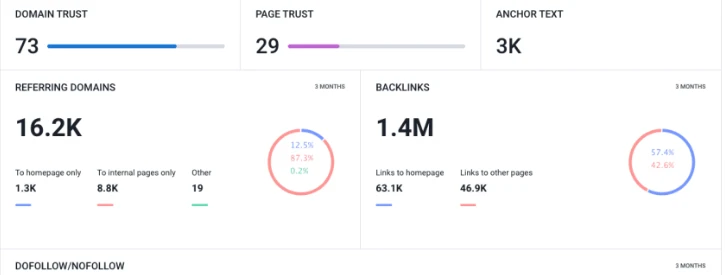

During the audit process, prioritize assessing the link profile for quality, relevance, and potential for organic growth. Many tools available in the market offer invaluable granular backlink data, helping in thorough analysis and strategy refinement.
Local business listings and citations are equally crucial for establishing local presence and credibility.
While being listed on directories like Yelp is beneficial, maintaining consistency in Name, Address, Phone Number (NAP), and other essential details across all listings is paramount for optimizing local SEO impact.
A thorough analysis of backlink profiles and local citations instills confidence in clients, revealing strategic efforts that boost online visibility and credibility in their target market.
RELEVANT READ: Top Link Building Strategies to Guarantee Success
Setting up effective local SEO reporting
Crafting a personalized SEO report is crucial because each project comes with its own distinct needs and objectives. This necessitates an individualized approach rather than relying on a generic solution. Thoughtfully designed SEO reports provide invaluable insights into website performance and can pinpoint areas for enhancement.
However, creating effective local SEO reporting can be draining, given the plethora of metrics to evaluate and the extensive data to analyze. Knowing how to begin can be a challenge in itself.
Below are some recommendations to help you get started on the right foot.
Establishing client goals and objectives
Before delving into crafting your SEO report, it’s essential to establish clear client goals and objectives for each project:
- Understand what your client aims to achieve. What are their key business goals?
- Determine how you’ll track progress and success. What metrics align with the client’s objectives?
- Ensure your SEO strategy is directly linked to your client’s broader business objectives.
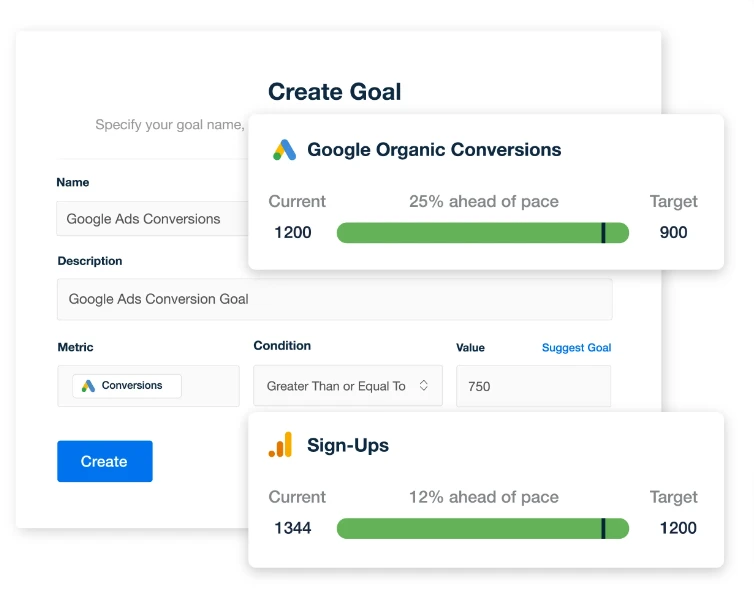

You can expedite the reporting process by answering these questions upfront. Focus on the metrics that really count once you have a firm grasp of the client’s SEO goals.
Some examples of local SEO goals and objectives are:
- Increased local brand awareness and visibility.
- Drive more qualified traffic to the website via the GMB listing.
- Outrank nearby local competitors for specific keywords.
Customizing reports for client needs
Tailoring reports to meet the specific needs of each client is essential. Since every client has distinct goals and priorities, their SEO reports should reflect this uniqueness. Customization involves aligning both the data and presentation style to cater to these individual requirements.
By doing so, clients receive reports that are not only relevant but also resonate with their objectives, fostering a deeper understanding and appreciation of the SEO efforts being undertaken.
Frequency and timing of reports
As a general guideline, it’s a good idea to give out an SEO report every month to help balance any transient fluctuations and highlight any major changes over the course of the month.
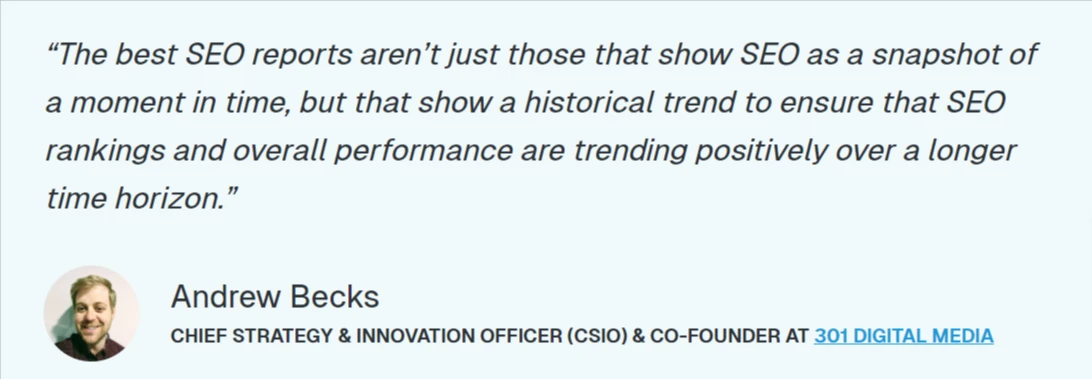

Additionally, your clients may wish to compare their SEO data to other business growth KPIs and observe their quarterly growth. As an SEO professional, you should strive to produce a monthly SEO report that demonstrates consistent development over the course of the year.
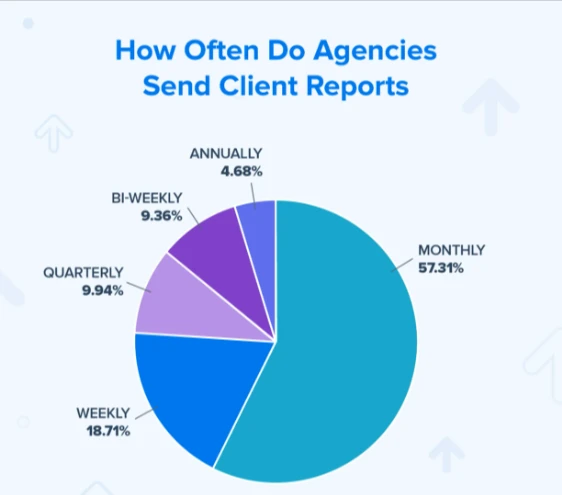

You should communicate with your client and agree on the best frequency and timing for your reports. Be accommodating and flexible in response to any modifications or requests your client may have regarding your reporting schedule.
Agency Owner Tip:
It’s advisable to send out your annual SEO reports approximately 6 to 8 weeks before your client begins drafting their annual operating plan for the next year. This timing ensures that the agency’s successes and value are highlighted while clients are budgeting rather than afterward.
RELEVANT READ: Local SEO Checklist to Grow Your Business in 2024
Creating the report
Here are some pointers to help you craft reports that are not only professional and polished but also effectively communicate key insights:
Structuring your report summary overview first
Begin your report with a concise overview of your progress toward goals, recent accomplishments, and forthcoming plans. Placing your recommendations and action plan at the beginning is wise since busy executives may only scan this section.
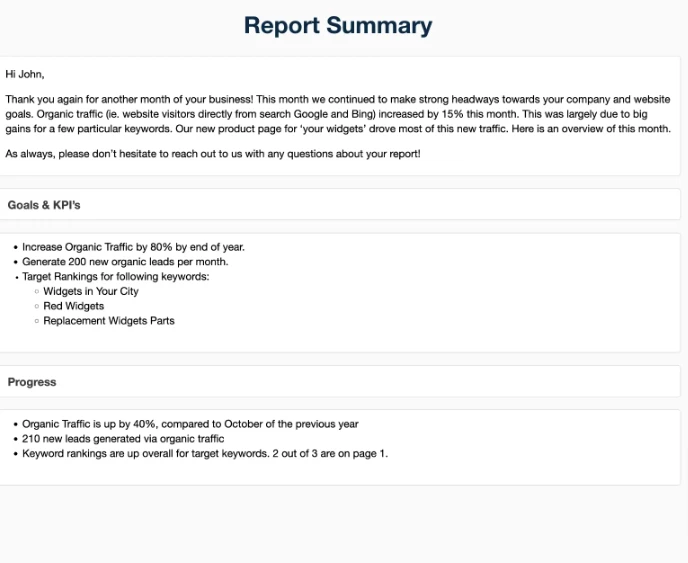

Highlight major achievements, explain how they align with business objectives, and detail your strategies for the next period.
Think of it as an executive summary, offering a snapshot of the entire report.
It should provide a brief yet insightful summary, engaging even the busiest readers and offering clarity about your progress and future plans.
Visualizing data for clarity
In addition to considering the data you’ll present in your local SEO reports, it’s essential to pay attention to how you’ll present it.
SEO professionals often overlook visualization, yet it’s just as crucial as the data itself. Visual elements help to make the numbers more actionable, simpler, and easier to understand.
Incorporate charts and graphs into your dashboard, opting for neutral colors that complement the data. Ensure adequate white space between the numbers and arrange everything in a clear and straightforward manner.
Nightwatch offers easy-to-use, customizable report templates, allowing you to quickly generate and present high-quality reports without spending excessive time on creation and analysis.
Additionally, you can schedule these reports to be automatically sent to specific recipients at chosen times and intervals. Nightwatch supports two types of reports: Customizable reports and Automated account-wide reports.
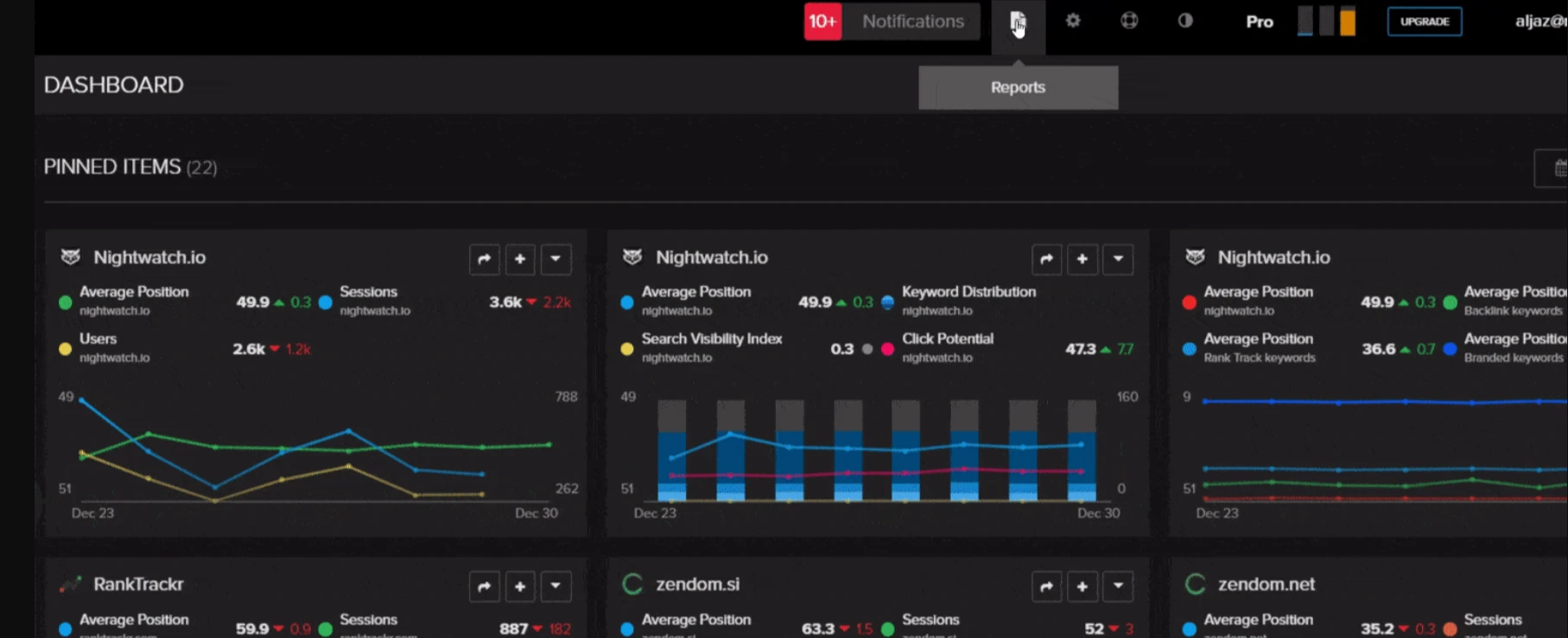

Ultimately, what truly matters in SEO reporting is whether your clients comprehend the information. You could be generating backlinks rapidly, improving rankings, and driving more traffic, but if you can’t effectively communicate these achievements, you risk losing the client.
Remember, your client isn’t an SEO expert, so it’s vital to explain each term and figure it out in plain English.
A helpful approach is to follow Einstein’s methodology: Imagine you’re explaining the concepts to a five-year-old!
This ensures clarity and understanding for all parties involved.
Incorporating competitive analysis
In 2021, Google introduced an algorithm update that gives preference to local businesses in search results, particularly those in close proximity to the user’s location, even if they’re not as famous as industry giants.
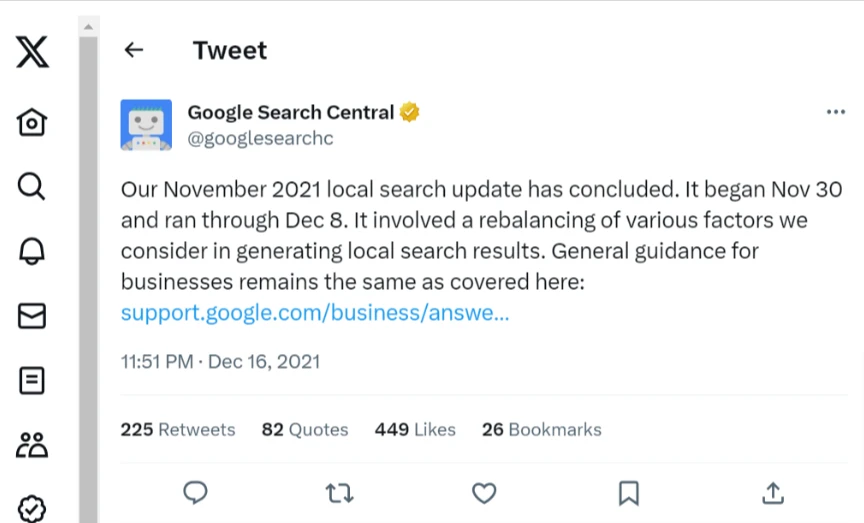
Proximity has become a significant factor in search rankings.
The use of ‘Where to buy’ and ‘Near me’ search queries has surged by approximately 200% in recent years.
To stay competitive, it’s essential to analyze the top three competitors nearest to your client’s physical location that are currently outranking you.
Develop a local SEO audit checklist based on their strategies and conduct a thorough assessment to pinpoint areas for improvement.
Consider employing innovative tools like text to speech technology to expedite this analysis process and effortlessly extract valuable insights from competitor websites.
RELEVANT READ: How to Position Brand in a Competitive Niche?
Best practices for client communication
Alright, so you’ve been grinding away on those SEO campaigns, and now it’s time to face the D-day: reporting time.
But let’s be real—nobody wants to waste a whole week copying and pasting endless tables and charts just to make a report that ends up gathering virtual dust.
So, how do we craft an SEO report that clients will actually understand without drowning in data?

First things first, strip away the fluff. Your clients aren’t interested in wading through a sea of metrics they barely understand. They just want to know a few key things:
- Progress Towards Goals: Did we move the needle closer to our SEO goals? Put this info right at the top, clear as day, using a handy goal tracker widget.
- What We’ve Been Up To: Give them the lowdown on what your team has been doing to push the needle and what impact it’s had. Stick in some annotations to highlight those big wins.
- Fixing What’s Broken: Even if things aren’t all sunshine and rainbows, show them you’ve got a plan to tackle any head-on and keep the momentum going. Assure clients that these issues are acknowledged and actively being addressed.
Now, let’s talk about communication strategy.
When you’re presenting SEO to your clients, are you focusing on your flashy metrics or their business goals?
Hint: it should be the latter.
Tailoring your reports to what they actually care about is key.
Ask yourself: are they marketing wizards or busy bees who just want the CliffsNotes version? Consider their level of understanding and adapt your approach accordingly.
That’s the gist of it…
Cut the jargon, know your audience, and deliver insights in a way that’s as crystal clear as a freshly washed window.
Your clients will thank you, and you’ll spend a lot less time banging your head against the keyboard. Win-win.
Remember, the goal is not to impress with technical expertise but to foster understanding and trust.
Conclusion
As marketers, when it comes to reporting, our natural instinct is often to overload clients with every minute detail, especially when results aren’t ideal. However, what really counts is creating reports that tell a straightforward story about how our marketing efforts are performing.
Key Takeaways:
- Focus on measuring and showcasing progress: Keep your SEO reports updated and refined to demonstrate the strides you’re making towards your clients’ goals, reinforcing your agency’s credibility and value.
- Listen to client feedback: Pay attention to what your clients have to say and use their customer feedback to improve your reports. It shows them you’re listening and committed to their success.
- Offer actionable insights: Offer insights from the data that clients can actually use to make their marketing better.
So, there you have it – SEO reporting made simple, effective, and maybe even a tad enjoyable. Now go forth and wow those clients!
Author Bio
Vineet is the Founder of 2xSaS, a result-oriented digital PR and Link Building agency working with brands like Hubspot, Hunter, G2, and more. He specializes in creating custom outreach campaigns, and content marketing strategies to help B2B & SaaS companies improve their organic traffic.
